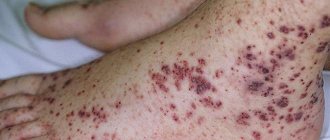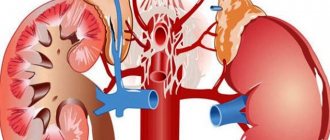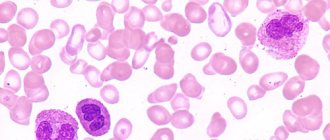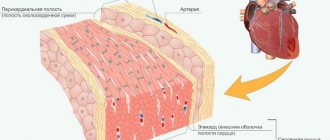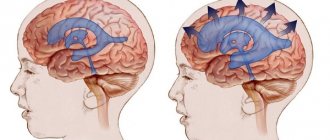Thanks to the development of medicine, large-scale disasters caused by epidemics of dangerous diseases do not occur in the modern world. Black smallpox, bubonic plague, cholera, Spanish flu - terrible pandemics of past centuries terrorized entire countries, devastated cities, brought fear and death, causing impotence among doctors. Fatal diseases that claim millions of lives in a short period of time are left behind, but there are still many dangerous ailments for which an effective cure has not yet been found.
Death from cardiovascular diseases
In Russia, death from heart and blood vessel diseases annually claims about a million people; worldwide, this figure exceeds 17 million. Pathologies of this group of diseases include:
- coronary heart disease, heart attack;
- heart disease, angina pectoris;
- thrombosis of deep veins and pulmonary artery (embolism);
- cerebrovascular accident (stroke);
- vascular atherosclerosis, hypertension.
Fatal heart diseases primarily affect people over 60 years of age, but can also be congenital. The development of cardiovascular diseases is based on a behavioral factor that negatively affects the normal functioning of blood vessels that supply nutrition to the heart and brain. First of all, this is an unhealthy diet, excess weight, lack of physical activity, alcohol and tobacco abuse.
This attitude towards one’s health leads to a long-term asymptomatic course of diseases in the human body, the first signs of which may be a heart attack or stroke. To prevent death from heart and vascular disease, there are warning signs that require close attention and immediate consultation with a doctor: high blood pressure, swelling, shortness of breath, chest pain and palpitations, accompanied by special sensations.
Oncological diseases
No less dangerous are oncological diseases, for example, cancer of the liver, lungs, mammary glands, stomach and colon. The fight against cancer is one of the most acute and pressing problems of our time. Oncological diseases rank second in mortality in the world after cardiovascular pathologies. Approximately 10 million people worldwide are diagnosed with these types of cancer each year. Every year, about 500 thousand cancer patients are diagnosed in Russia.
Cancer is a malignant formation and tumor that can affect any part of the human body. The main cause of death from cancer is metastases. These are abnormal cells that grow beyond their boundaries and are able to invade nearby body parts and organs.
Risk factors for cancer include obesity, high body mass index, lack of fresh fruits and vegetables in the diet, drinking alcohol and smoking, and lack of physical activity.
Oncology
A terrible diagnosis - cancer, ranks second in the list of major diseases that end in death. Death from various oncological pathologies takes more than 8 million human lives every year, and all the advances in medicine are still not able to overcome cancer. Malignant neoplasms can affect any part of the body. The most common types of cancer with a high probability of death include tumors of the lungs, liver, stomach, colon and rectum, and breast. Children under 17 years of age most often die from leukemia, lymphoma, sarcoma, and brain tumors.
There are many reasons that encourage normal healthy cells to transform into cancer cells and then quickly spread through the blood throughout the body (metastases). The disease, which leads to death due to the destruction of internal organs, can be caused by genetic and external factors, the main of which are the following:
- poor ecology, exposure to radiation and ultraviolet radiation;
- chemical carcinogens entering the body with food and household chemicals;
- viruses, bacteria, infections;
- weakened immunity (stress, prolonged depression);
- obesity, smoking, lack of movement.
The insidiousness of cancer lies in the fact that obvious symptoms appear only in the late stages of a dangerous disease, when a complete cure becomes impossible, and doctors can only delay the date of death. Cancer cells are detected by testing tumor markers, by palpable lumps, as well as by indicators such as rapid weight loss, appetite, constant weakness, and fever. The favorable outcome of treatment and the ability to defeat the disease depend on how early the pathology is detected.
Important! Death after an illness diagnosed with stage IV cancer occurs in 90% of patients. Even 1% of cancer cells remaining after surgery or radiation therapy can become the source of a second relapse with a high probability of death.
Respiratory tract infections and diseases
Pneumonia, ARVI and influenza account for 95% of all infectious diseases in the world; they are also one of the leading causes of high death rates in the world, more than 3 million deaths per year. The regular evolution of hundreds of viruses, which can easily take on new forms and species, allows them to demonstrate amazing adaptability to drugs aimed at destroying them. No vaccine can help a person permanently develop immunity to infection, and its effect is aimed only at mitigating symptoms.
Diseases affect not only the respiratory system, but also pose a serious danger to other vital organs: the heart, liver, brain, and muscular system. Fatal diseases are more often diagnosed in people with chronic illnesses or weakened immune systems: children under 5 years of age and elderly people over 65 years of age.
Pathologies of the respiratory tract that pose a threat to human life include bronchial asthma and chronic obstructive pulmonary disease. The diseases are not treatable, progress rapidly, are characterized by shortness of breath, difficulty breathing; in a quarter of patients with severe forms of exacerbations, death occurs within a year. At risk are tobacco smokers, people employed in hazardous industries or living in regions with polluted air.
List of the deadliest diseases in the world
Recommended news
Levits: it is very important to speak the Latvian language not “somehow”, because it is a tool of thinking
Journalist: A young woman died from COVID, and people are laughing. What do they have in their heads instead of brains?
There are certain deadly diseases that to this day, despite advances in technology and medicine, still cannot be cured and have no chance of survival.
To the extent possible, treatment of the most deadly diseases is only to treat the patient's symptoms in order to reduce suffering. Many of these diseases are part of national and international disease lists because they are highly contagious. Below we describe 25 of them:
Below is a list of the top 10 deadly diseases that cause the most deaths worldwide, according to the World Health Organization (WHO).
Cardiac ischemia
Text continues after advertisement
The deadliest disease in the world is coronary artery disease. Also called coronary artery disease, CAD occurs when the blood vessels that supply blood to the heart become narrowed. May lead to chest pain, heart failure and arrhythmia.
Although coronary heart disease remains a leading cause of death, mortality has decreased in many European countries and in the United States. This may be due to improved health education, access to healthcare, and forms of prevention.
However, in many developing countries, mortality rates from CHD are rising. Included in this increase are life expectancy, socioeconomic changes, and lifestyle risk factors. It is included in the list of the most deadly diseases in the world.
Risk factors and prevention of coronary heart disease Risk factors for CAD include:
Text continues after advertisement
high blood pressure high cholesterol smoking family history ischemic heart disease diabetes overweight.
Talk to your doctor if you have one or more of these risk factors.
You can prevent CAD with medications and maintain good heart health. Some steps you can take to reduce your risk:
Maintaining a healthy weight Eating a balanced diet low in sodium and high in fruits and vegetables Avoiding smoking Drinking alcohol in moderation.
Stroke
A stroke occurs when an artery in your brain becomes blocked or leaks. This causes the oxygen-deprived cells to begin dying within minutes. During the stroke, you feel suddenly numb and confused, or have difficulty walking or seeing. If left untreated, a stroke can cause long-term disability.
In fact, stroke is one of the deadliest diseases. People who receive treatment within 3 hours of a stroke are less likely to have disability. The Centers for Disease Control and Prevention reports that 93 percent of people knew that sudden numbness on one side was a symptom of a stroke. But only 38% knew all the symptoms that would prompt them to seek emergency help. It is included in the list of the most deadly diseases in the world.
Risk factors for stroke include:
high blood pressure family history of stroke especially in combination with oral contraceptives being a woman
Text continues after advertisement
Some risk factors for stroke can be reduced with preventive care, medications, and lifestyle changes. In general, good health habits can reduce your risk.
Ways to prevent stroke may include controlling high blood pressure with medication or surgery. You should also maintain a healthy lifestyle, in addition to regular exercise and a healthy, low-sodium diet. Avoid smoking and drinking only in moderation, as these activities increase the risk of stroke.
Lower respiratory tract infections
Text continues after advertisement
Lower respiratory tract infections are infections in the airways and lungs. This may be due to:
influenza pneumonia bronchitis tuberculosis
Viruses usually cause lower respiratory tract infections. They can also be caused by bacteria. Cough is the main symptom of a lower respiratory tract infection. You may also feel shortness of breath, wheezing, and chest tightness. Untreated lower respiratory tract infections can lead to respiratory failure and death. They are included in the list of the most deadly diseases in the world. They are one of the most deadly diseases in the world.
Text continues after advertisement
Risk factors for lower respiratory tract infection include:
influenza poor air quality or frequent exposure to lung irritants smoking weak immune systems overcrowded child care facilities that mainly affect infants asthma
HIV
One of the best preventative measures you can take to reduce respiratory infections is to get a flu shot every year. People at high risk of pneumonia can also get the vaccine. Wash your hands regularly with soap to avoid bacteria, especially before touching your face and before eating. Staying home and resting until you feel better if you have a respiratory infection will allow the rest to improve healing.
Chronic obstructive pulmonary disease
Text continues after advertisement
Chronic obstructive pulmonary disease (COPD) is a long-term, progressive lung disease that makes breathing difficult. Chronic bronchitis and emphysema types of COPD. In 2004, approximately 64 million people worldwide were living with COPD.
Risk factors for COPD include:
Smoking or second-hand smoke Lung irritants, such as chemical fumes Family history with AATD gene associated with COPD History of childhood respiratory infections
There is no cure for COPD, but its progression can be slowed with medication. The best ways to prevent COPD are to quit smoking and avoid second-hand smoke and other lung irritants. If you are experiencing any COPD symptoms, getting treatment as soon as possible will improve your outlook.
Respiratory cancer
Text continues after advertisement
Respiratory tract cancers include cancer of the trachea, larynx, bronchi and lungs. The main causes are smoking, secondhand smoke, and environmental toxins. But household pollution such as fuel and mold also contribute. One of the most deadly diseases in the world.
Impact of respiratory tract cancer around the world
In 2020, a study reports that respiratory cancer accounts for about 4 million deaths annually. In developing countries, there is an 81 to 100 percent increase in respiratory cancers due to pollution and smoking. Many Asian countries, especially India, still use charcoal for cooking. Accounting for solid fuel emissions accounted for 17 percent of lung cancer deaths in men and 22 percent of women.
Risk factors and prevention
Tracheal, bronchial, and lung cancers can affect anyone, but they are most likely to affect those who have a history of smoking or tobacco use. Other risk factors for such cancers include family history and exposure to environmental factors such as diesel fumes.
Besides avoiding vapor and tobacco products, it is unknown if there is anything else that can be done to prevent lung cancer. However, early diagnosis can improve your appearance and reduce the symptoms of respiratory cancer.
Diabetes
Text continues after advertisement
Diabetes mellitus is a group of diseases that affect the production of insulin. In type 1 diabetes, the pancreas cannot produce insulin. The reason is unknown. In type 2 diabetes, the pancreas does not produce enough insulin, or insulin cannot be used effectively. Type 2 diabetes can be caused by a number of factors, including poor diet, physical inactivity and excess weight.
People in low- and middle-income countries are more likely to die from diabetes complications. It is included in the list of the most deadly diseases in the world.
Risk factors for diabetes include:
overweight high blood pressure old age not eating regularly unhealthy diet
If you have diabetes, you can control your symptoms by exercising regularly and maintaining a healthy diet. Adding fiber to your diet will help control your blood sugar levels.
Alzheimer's disease
When you think of Alzheimer's disease or dementia, you may think of memory loss, but you may not think of the terminal illness. Alzheimer's disease is a progressive disease that destroys memory and interrupts normal mental functions. These include thinking, reasoning, and typical behavior.
Text continues after advertisement
Alzheimer's disease is the most common type of dementia—60 to 80 percent of dementia cases are, in fact, Alzheimer's disease. The disease begins by causing soft memory problems, making it difficult to remember information. Over time, however, the disease progresses and you may have no memory of large periods of time. A 2014 study found that the number of deaths due to Alzheimer's disease may be higher than reported.
Risk factors for Alzheimer's disease include:
being older than 65 family medical history inheriting disease genes from parents existing mild cognitive impairment Down syndrome unhealthy lifestyle women previous head injuries being disconnected from the community or having poor interactions with others for long periods of time
There is currently no way to prevent Alzheimer's disease. Research doesn't understand why some people develop it and others don't. As they work to understand this, they also work to find preventive methods.
One thing that can be helpful in reducing the risk of disease is a heart-healthy diet. A diet high in fruits and vegetables, low in saturated fat from meat and dairy, and high in sources of healthy fats such as nuts, olive oil, and fish meats, can help you reduce your risk of more than just heart disease — they may protect your brain from Alzheimer's disease, too.
Dehydration due to gastrointestinal diseases
Diarrhea is when you have three or more loose stools in a day. If diarrhea lasts more than a few days, your body is losing too much water and salt. This causes dehydration, which can lead to death. Diarrhea is usually caused by an intestinal virus or bacteria transmitted through contaminated water or food. This is especially common in developing countries with poor sanitation conditions.
Text continues after advertisement
Diarrhea is the second deadliest disease in children under 5 years of age. About 760,000 children die from gastrointestinal diseases every year.
Risk factors for gastrointestinal diseases include:
live in an area with poor sanitation no access to clean water age, children are most likely to experience severe symptoms of gastrointestinal diseases malnutrition weakened immune system
According to UNICEF, the best method of prevention is practicing good hygiene. Good hand washing practices can reduce the incidence of gastrointestinal diseases by 40 percent. Improved water purification and quality, as well as early medical intervention, can also help prevent gastrointestinal diseases.
Tuberculosis
Tuberculosis is a lung disease caused by Mycobacterium tuberculosis. It can be treated, although some strains are resistant to conventional treatments. Tuberculosis is one of the world's leading killers of people with HIV. About 35 percent of HIV deaths are due to tuberculosis.
Tuberculosis cases have decreased by 1.5% annually since 2000. The goal is to end the disease by 2030.
Risk factors for tuberculosis include:
diabetes mellitus HIV infection lower body weight being close to other people with TB regular use of certain medications, such as corticosteroids or drugs that suppress the immune system
The best prevention against tuberculosis is to receive the Bacillus Calmette-Guerin vaccine (BCG). This is usually given to children. If you think you have been exposed to TB, you can start taking medicine to reduce your chance of developing the disease.
Cirrhosis
Cirrhosis is the result of chronic or long-term scarring and damage to the liver. The damage may be the result of kidney disease, or it may be caused by diseases such as hepatitis and chronic alcoholism. A healthy liver filters harmful substances from your blood and sends healthy blood into your body. As substances damage the liver, a scar forms.
As more scar tissue forms, the liver must work harder to function properly. Eventually, the liver may stop working. It is included in the list of the most deadly diseases in the world.
Risk factors for cirrhosis include:
Chronic alcohol use Fat accumulation around the liver (non-alcoholic fatty liver disease) Chronic viral hepatitis
Stay away from behaviors that can cause liver damage to prevent cirrhosis. Long-term drinking and heavy drinking are one of the leading causes of cirrhosis, so avoiding alcohol can help you prevent damage.
Likewise, you can avoid non-alcoholic fatty liver disease by eating a healthy diet rich in fruits and vegetables, as well as sugar and fat. Finally, you can reduce your chance of contracting viral hepatitis by using protection during sex and avoiding sharing anything that may contain blood. This includes needles, razors, toothbrushes and more.
While fatal diseases have increased, their more serious conditions have also decreased. Certain factors, such as increasing life expectancy, naturally increase the incidence of diseases such as coronary artery disease, stroke and heart disease.
But many of the diseases on this list are preventable and treatable. As medicine continues to advance and prevention education increases, we may see a decrease in mortality from these diseases.
A good approach to reducing the risk of any of these conditions is to live a healthy lifestyle with good nutrition and exercise. Avoiding smoking and drinking in moderation may also help. For bacterial or viral infections, proper hand washing can help prevent or reduce the risk.
tagweb.ru
Diabetes
Every 11th adult inhabitant of the earth suffers from diabetes, which ranks eighth in the ranking of diseases from which the most people die in the world. High blood sugar levels due to insufficient amounts of insulin produced and absorbed lead to metabolic disorders in the body. Complications and consequences of the disease with a fatal outcome pose a particular threat to life:
- renal failure (nephropathy);
- trophic ulcers, fungus, gangrene of the extremities;
- violation of the structure of blood vessels (angiopathy);
- atherosclerosis, hypertension;
- diabetic coma.
The pathology is inherited from parents or acquired with age as a result of a tendency to overeat, excessive worry, viral infections and pancreatic diseases.
Tuberculosis
Death from the disease, which most often affects the lungs, occurs in 95% of cases in developing countries. In Russia, the incidence rate is 53 people per 100,000 population, of which 11 die.
Early symptoms of tuberculosis can easily be confused with a common cold, and in order to become infected, it is enough to be in a room where a patient with an active open stage of the disease was located a few hours ago. The vitality of pathogens is explained by their amazing ability to mutate and counteract aggressive environmental factors. The process of transformation into other forms that are resistant to antibiotics makes diagnosis and treatment difficult, which as a result can cost a person’s life.
People with a low level of immunity, an insufficient, unbalanced diet, living in poor sanitary conditions, drug addicts, and HIV carriers are at risk of infection.
Important! Of particular danger is secondary tuberculosis (re-infection with another type of microbacteria). Regardless of the complexity of the treatment used, 30% of patients die within 2-3 months.
AIDS
According to official data, almost a million HIV-infected people live in Russia, and the rate of increase in incidence is increasing every year. The last stage of HIV becomes AIDS - acquired immunodeficiency syndrome. Before death, the disease attacks the human body's defense system, making it weak and vulnerable to various infections, when a common cold can result in death. AIDS does not manifest itself in the early stages, and subsequent therapy is aimed at maintaining the patient’s immunity.
HIV is transmitted through blood, semen, and breast milk, so its carriers are mainly drug addicts, prostitutes, and homosexuals. Most often, secondary pathologies become fatal illnesses for AIDS patients: tuberculosis, hepatitis, pneumonia, and cancer.
Statistics of deaths from fatal diseases in the world:
| Disease | % ratio of all registered deaths |
| Cardiovascular | 31 |
| Oncology | 10 |
| Respiratory tract infections | 5 |
| Tuberculosis | 2,7 |
| AIDS | 1,1 |
The nature of the occurrence and causes of death in Alzheimer's disease, Pique's disease, progeria and other dangerous diseases, as well as methods of their treatment, still remain a mystery to medicine.
It would seem that in the age of innovative technologies and high level of medicine, diseases that lead to death should not exist in the world. Unfortunately, the words “medicine is powerless” still sound like a sentence today. It is encouraging to know that most incurable diseases can be avoided by paying enough attention to your health and effective preventive measures.
Rabies is terrible and almost incurable
One of the most dangerous diseases for humans is rabies, which is transmitted through the saliva of an infected dog. The incubation period can last up to a year, so immediately after a bite, even in the absence of symptoms, it is imperative to get vaccinated. If you do not take care of the vaccine, the consequences are the most terrible: when the first signs of the disease appear, it is impossible to cure it in 99% of cases. The last days of a person are extremely difficult: severe pain and changes in the psyche.
